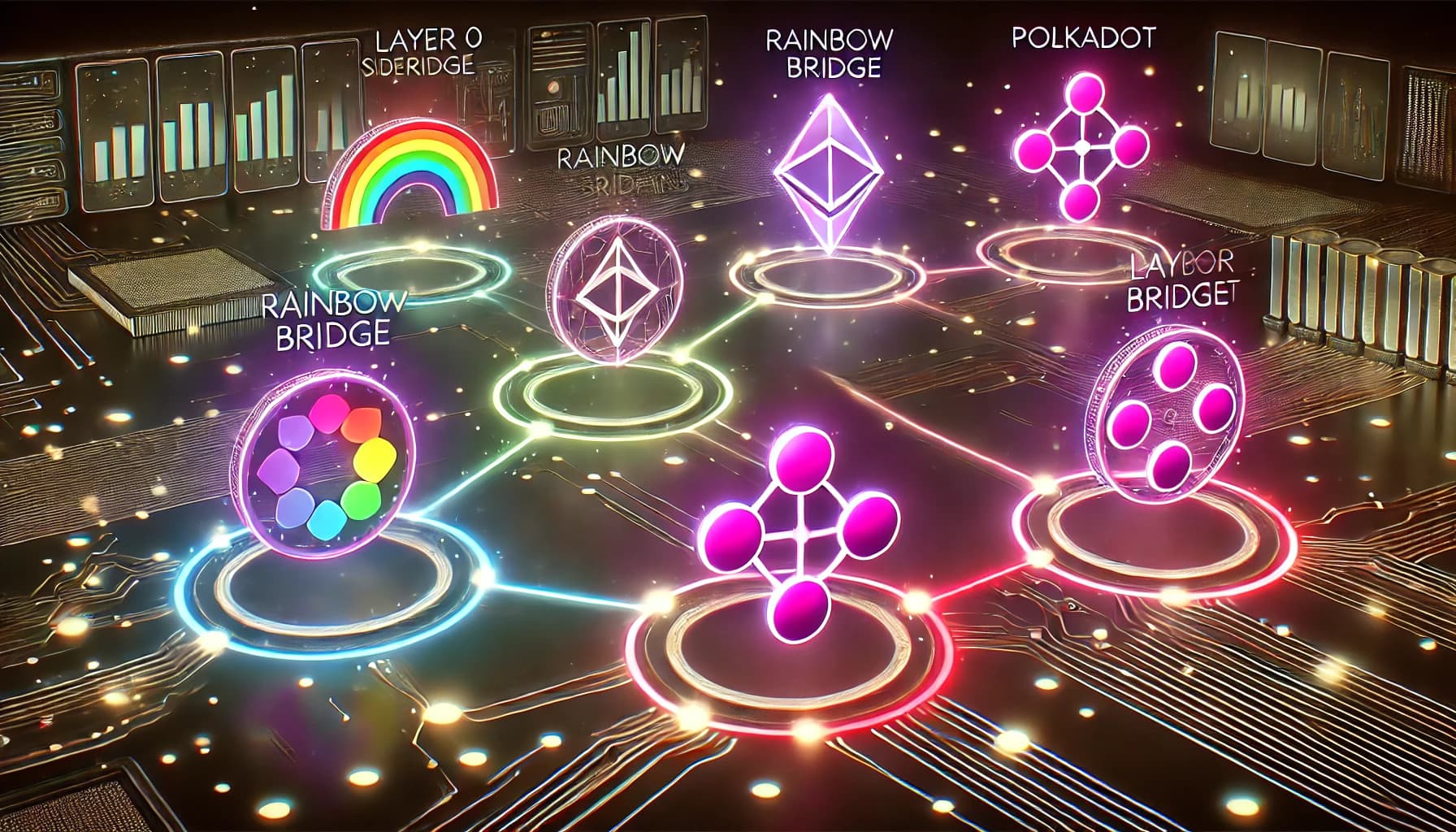Suggested
News
Last updated: Thursday, March 27, 2025

Understanding Blockchain Interoperability: Connecting Networks for a Decentralized Future
It’s March 26, 2025, and the blockchain world is buzzing louder than a Hanoi wet market. The big story? Interoperability—blockchains talking to each other like old friends over pho. Picture this: Ethereum swaps data with Solana, Polkadot links up with Cosmos, and a Mekong farmer’s rice trades seamlessly across networks. This isn’t just tech jargon—it’s the glue stitching together a decentralized future. Let’s dive into why blockchain interoperability matters and how it’s shaping 2025.
What’s Blockchain Interoperability Anyway?
Think of blockchains as islands—great on their own, but isolated. Interoperability is the bridge (or boat!) connecting them. It’s the tech letting different networks share data, assets, and trust without a middleman. Back in Bitcoin’s day, chains didn’t chat. Now, with over 1,000 networks live, silos won’t cut it. By 2025, interoperable systems like Polkadot and Chainlink’s CCIP are moving billions daily, proving this is no side hustle—it’s the main event.
The Tech Making It Happen
How’s it work? Cross-chain protocols are the stars here. Polkadot’s relay chain ties networks together, letting them trade assets like kids swapping Pokémon cards. Cosmos’ IBC protocol moves data faster than a Saigon scooter. Chainlink’s CCIP secures smart contract calls across chains—think of it as a cosmic translator. Even atomic swaps let you trade BTC for ETH directly. This tech’s not perfect—bridges got hacked for $2 billion in 2022—but 2025’s fixes are tightening the screws.

Why It’s a Game-Changer
Interoperability isn’t just geek candy—it’s rewriting rules. DeFi’s exploding—$3 trillion locked, thanks to cross-chain swaps. Supply chains, like Vietnam’s shrimp exports, track goods from boat to plate across networks, cutting fraud by 40%. Gaming? Your Hanoi-crafted NFT avatar roams multiple metaverses, earning crypto wherever it goes. It’s not one chain ruling them all—it’s all chains playing nice, boosting scale and slashing costs.
The People and Projects Leading the Charge
Who’s behind this? Vitalik Buterin’s Ethereum still dreams big, pushing rollups that talk to other chains. Gavin Wood’s Polkadot is the interoperability OG, while Chainlink’s Sergey Nazarov keeps data flowing. Locally, Vietnam’s Kyber Network is bridging Asian markets—$500 million in trades last month alone. These visionaries aren’t just coding—they’re building a web3 Lego set where every piece fits.
Everyday Wins in a Connected World
This isn’t sci-fi—it’s now. A Da Nang artist sells NFTs on Ethereum, cashes out on Binance Smart Chain, all in an hour. A Mekong Delta co-op uses Cosmos to prove their fish is sustainable, doubling exports. Even voting’s getting a taste—Thailand’s piloting a cross-chain ballot system. From wallets to markets, interoperability’s making life smoother, safer, and more yours.
The Road Ahead
What’s next? By December 2025, expect wild leaps: zero-knowledge proofs linking chains without spilling secrets, or Solana powering smart cities in HCMC. Analysts peg cross-chain volume at $10 trillion by 2030. Challenges? Sure—security’s still a beast, and standards are messy. But dig into The Block or Polkadot’s site—the future’s already rolling.
Why You Should Care
Interoperability’s not just for coders—it’s for anyone who wants a faster, freer digital world. Searching 'blockchain interoperability 2025' or 'cross-chain future'? You’ve hit gold. It’s about control—your money, your data, your way—across a web of networks. So, how’s this connecting your world today—or tomorrow?
Suggested Articles
For You
Related Articles
- Interoperability: How Polkadot and Cosmos Connect Blockchains in 2025
- New Blockchain Technologies in 2025: Modular and Parallel Innovations
- Cross-Chain Bridges - Connecting Blockchains and Their Associated Risks
- How Trump’s Policies Could Turbocharge Bitcoin in 2025: A Political Power Play
- How Coinigy Simplifies Multi-Exchange Trading for Crypto Enthusiasts in 2025
- Humanity Protocol in 2025: Robust Infrastructure and a Vibrant Community Without Airdrop Hype
- Cosmos (ATOM) in 2025: The Interoperable Blockchain Ecosystem Powering a Connected Future
- Polygon (MATIC) in 2025: The Layer 2 Solution Revolutionizing Ethereum and Beyond
- zkSync (ZKS) in 2025: The Layer 2 Zero-Knowledge Powerhouse with Airdrop Potential












